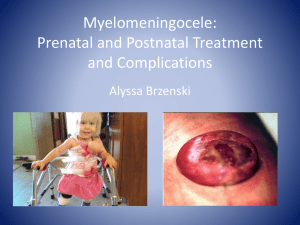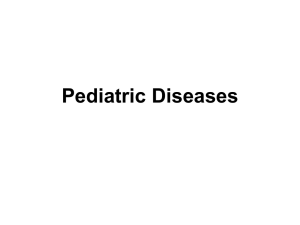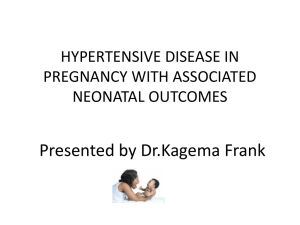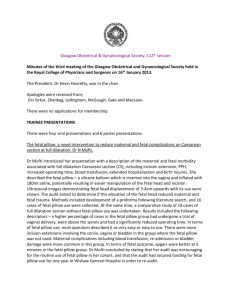Kimona Cameron Poster
advertisement
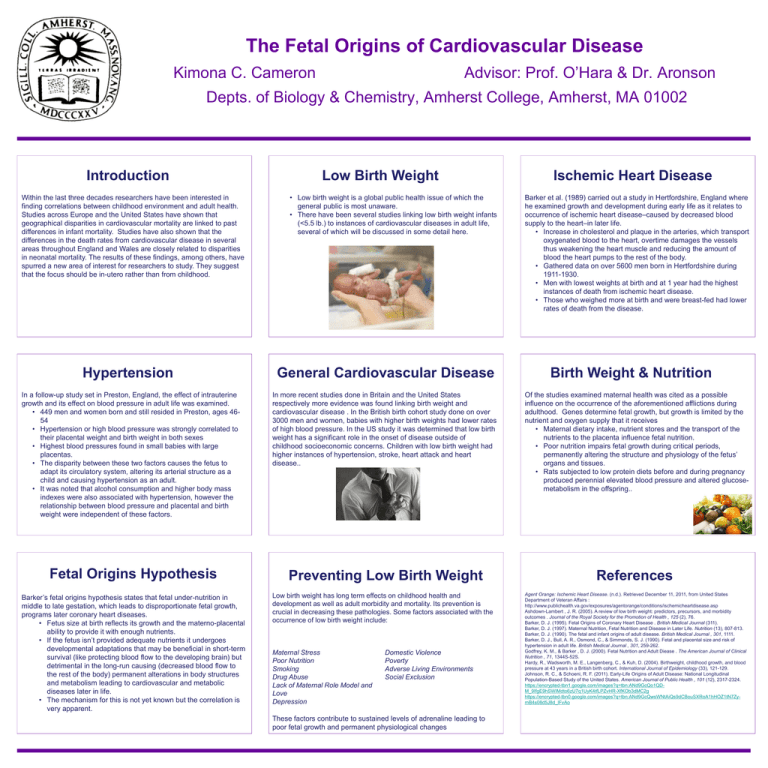
The Fetal Origins of Cardiovascular Disease Kimona C. Cameron Advisor: Prof. O’Hara & Dr. Aronson Depts. of Biology & Chemistry, Amherst College, Amherst, MA 01002 Introduction Within the last three decades researchers have been interested in finding correlations between childhood environment and adult health. Studies across Europe and the United States have shown that geographical disparities in cardiovascular mortality are linked to past differences in infant mortality. Studies have also shown that the differences in the death rates from cardiovascular disease in several areas throughout England and Wales are closely related to disparities in neonatal mortality. The results of these findings, among others, have spurred a new area of interest for researchers to study. They suggest that the focus should be in-utero rather than from childhood. Hypertension In a follow-up study set in Preston, England, the effect of intrauterine growth and its effect on blood pressure in adult life was examined. • 449 men and women born and still resided in Preston, ages 4654 • Hypertension or high blood pressure was strongly correlated to their placental weight and birth weight in both sexes • Highest blood pressures found in small babies with large placentas. • The disparity between these two factors causes the fetus to adapt its circulatory system, altering its arterial structure as a child and causing hypertension as an adult. • It was noted that alcohol consumption and higher body mass indexes were also associated with hypertension, however the relationship between blood pressure and placental and birth weight were independent of these factors. Fetal Origins Hypothesis Barker’s fetal origins hypothesis states that fetal under-nutrition in middle to late gestation, which leads to disproportionate fetal growth, programs later coronary heart diseases. • Fetus size at birth reflects its growth and the materno-placental ability to provide it with enough nutrients. • If the fetus isn’t provided adequate nutrients it undergoes developmental adaptations that may be beneficial in short-term survival (like protecting blood flow to the developing brain) but detrimental in the long-run causing (decreased blood flow to the rest of the body) permanent alterations in body structures and metabolism leading to cardiovascular and metabolic diseases later in life. • The mechanism for this is not yet known but the correlation is very apparent. Low Birth Weight • Low birth weight is a global public health issue of which the general public is most unaware. • There have been several studies linking low birth weight infants (<5.5 lb.) to instances of cardiovascular diseases in adult life, several of which will be discussed in some detail here. General Cardiovascular Disease In more recent studies done in Britain and the United States respectively more evidence was found linking birth weight and cardiovascular disease . In the British birth cohort study done on over 3000 men and women, babies with higher birth weights had lower rates of high blood pressure. In the US study it was determined that low birth weight has a significant role in the onset of disease outside of childhood socioeconomic concerns. Children with low birth weight had higher instances of hypertension, stroke, heart attack and heart disease.. Preventing Low Birth Weight Low birth weight has long term effects on childhood health and development as well as adult morbidity and mortality. Its prevention is crucial in decreasing these pathologies. Some factors associated with the occurrence of low birth weight include: Maternal Stress Poor Nutrition Smoking Drug Abuse Lack of Maternal Role Model and Love Depression Domestic Violence Poverty Adverse Living Environments Social Exclusion These factors contribute to sustained levels of adrenaline leading to poor fetal growth and permanent physiological changes Ischemic Heart Disease Barker et al. (1989) carried out a study in Hertfordshire, England where he examined growth and development during early life as it relates to occurrence of ischemic heart disease–caused by decreased blood supply to the heart–in later life. • Increase in cholesterol and plaque in the arteries, which transport oxygenated blood to the heart, overtime damages the vessels thus weakening the heart muscle and reducing the amount of blood the heart pumps to the rest of the body. • Gathered data on over 5600 men born in Hertfordshire during 1911-1930. • Men with lowest weights at birth and at 1 year had the highest instances of death from ischemic heart disease. • Those who weighed more at birth and were breast-fed had lower rates of death from the disease. Birth Weight & Nutrition Of the studies examined maternal health was cited as a possible influence on the occurrence of the aforementioned afflictions during adulthood. Genes determine fetal growth, but growth is limited by the nutrient and oxygen supply that it receives • Maternal dietary intake, nutrient stores and the transport of the nutrients to the placenta influence fetal nutrition. • Poor nutrition impairs fetal growth during critical periods, permanently altering the structure and physiology of the fetus’ organs and tissues. • Rats subjected to low protein diets before and during pregnancy produced perennial elevated blood pressure and altered glucosemetabolism in the offspring.. References Agent Orange: Ischemic Heart Disease. (n.d.). Retrieved December 11, 2011, from United States Department of Veteran Affairs : http://www.publichealth.va.gov/exposures/agentorange/conditions/ischemicheartdisease.asp Ashdown-Lambert , J. R. (2005). A review of low birth weight: predictors, precursors, and morbidity outcomes . Journal of the Royal Society for the Promotion of Health , 125 (2), 76. Barker, D. J. (1995). Fetal Origins of Coronary Heart Disease . British Medical Journal (311). Barker, D. J. (1997). Maternal Nutrition, Fetal Nutrition and Disease in Later Life. Nutrition (13), 807-813. Barker, D. J. (1990). The fetal and infant origins of adult disease. British Medical Journal , 301, 1111. Barker, D. J., Bull, A. R., Osmond, C., & Simmonds, S. J. (1990). Fetal and placental size and risk of hypertension in adult life. British Medical Journal , 301, 259-262. Godfrey, K. M., & Barker , D. J. (2000). Fetal Nutrition and Adult Diease . The American Journal of Clinical Nutrition , 71, 1344S-52S. Hardy, R., Wadsworth, M. E., Langenberg, C., & Kuh, D. (2004). Birthweight, childhood growth, and blood pressure at 43 years in a British birth cohort. International Journal of Epidemiology (33), 121-129. Johnson, R. C., & Schoeni, R. F. (2011). Early-Life Origins of Adult Disease: National Longitudinal Population-Based Study of the United States. American Journal of Public Health , 101 (12), 2317-2324. https://encrypted-tbn1.google.com/images?q=tbn:ANd9GcQo1QDM_9IfgE9hSWIMdto6zU7q1UyK4tfLPZvHR-XfKOb3dMC2g https://encrypted-tbn0.google.com/images?q=tbn:ANd9GcQwsWNtAiQs9dCBouSXRoA1hHOZ1tN7ZymB4s08d5J8d_lFvAo




